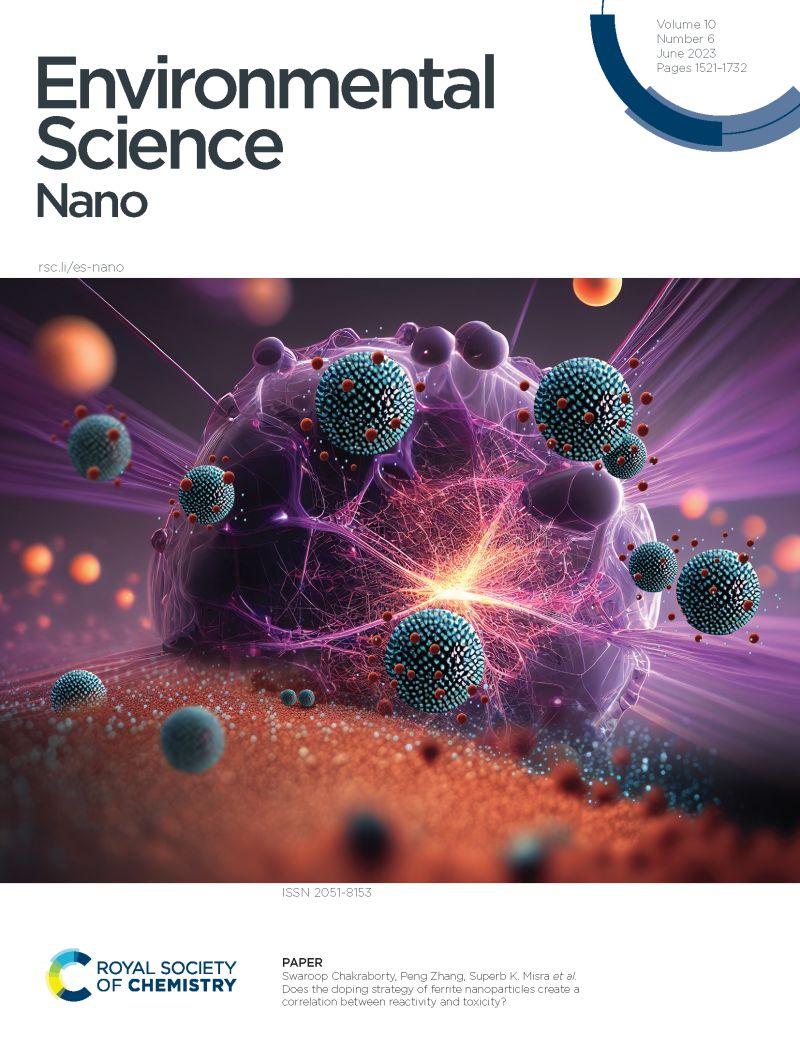Safe-by-design assessment of SiO2@ZnO multi-component nanomaterial used in construction
IF 5.8
2区 环境科学与生态学
Q1 CHEMISTRY, MULTIDISCIPLINARY
引用次数: 0
Abstract
Safety aspects of chemicals/materials are transversal in all sustainability dimensions, representing a pillar at early-innovation stages of the European Commission’s “Safe and Sustainable-by-Design” (SSbD) framework for chemicals and materials. The first three of the five SSbD framework steps covers different safety aspects: hazard assessment based on intrinsic properties (step 1), occupational health and safety (including exposure) assessment during the production/processing phase (step 2) and exposure in the final application phase (step 3). The goal of this work was to identify a set of characterization tools/procedures to support the operationalization of the first three safety steps to multi-component nanomaterials (MCNMs), applying the findings to a SiO2 core-ZnO shell MCNM. The safety of this MCNM, used as additive to a silicate/calcium hydroxide mortar to improve air quality through photocatalytic NOₓ removal, was investigated from different perspectives along its value chain. Existing and newly generated data on its hazard profile were collected, workers’ exposure during synthesis was assessed, and potential exposure to hazardous substances during its final application phase was investigated. Concerning step 1, physico-chemical properties, hazard classification and cytotoxicity assays were considered. Afterwards, a three-tiered established methodology for evaluating occupational exposure assessment was performed for step 2. Lastly, for step 3, the release of inorganic substances from the MCNM-based mortars in the final application phase was investigated. Safety assessment according to the SSbD framework was done by selecting tools and procedures suitable for application at an early innovation stage, resulting in a preliminary hazard assessment of the MCNM and a suggestion for redesigning a step in the process.对建筑中使用的 SiO2@ZnO 多组分纳米材料进行安全设计评估
化学品/材料的安全问题横跨所有可持续性层面,是欧盟委员会化学品和材料 "安全和可持续设计"(SSbD)框架早期创新阶段的支柱。SSbD 框架五个步骤中的前三个步骤涉及不同的安全方面:基于内在特性的危害评估(步骤 1)、生产/加工阶段的职业健康和安全(包括暴露)评估(步骤 2)以及最终应用阶段的暴露评估(步骤 3)。这项工作的目标是确定一套表征工具/程序,以支持多组分纳米材料(MCNM)前三个安全步骤的操作,并将研究结果应用于二氧化硅内核-氧化锌外壳 MCNM。这种 MCNM 用作硅酸盐/氢氧化钙砂浆的添加剂,通过光催化去除 NOₓ 来改善空气质量,我们从其价值链的不同角度对其安全性进行了研究。收集了有关其危害概况的现有数据和新生成的数据,评估了工人在合成过程中的接触情况,并调查了在最终应用阶段可能接触到的有害物质。在步骤 1 中,考虑了物理化学特性、危害分类和细胞毒性检测。随后,在第 2 步中采用了一种三层既定方法来评估职业接触评估。最后,在第 3 步中,对基于 MCNM 的砂浆在最终应用阶段的无机物质释放情况进行了调查。根据 SSbD 框架进行安全评估时,选择了适合在早期创新阶段应用的工具和程序,从而对 MCNM 进行了初步危害评估,并提出了重新设计流程中某一步骤的建议。
本文章由计算机程序翻译,如有差异,请以英文原文为准。
求助全文
约1分钟内获得全文
求助全文
来源期刊

Environmental Science: Nano
CHEMISTRY, MULTIDISCIPLINARY-ENVIRONMENTAL SCIENCES
CiteScore
12.20
自引率
5.50%
发文量
290
审稿时长
2.1 months
期刊介绍:
Environmental Science: Nano serves as a comprehensive and high-impact peer-reviewed source of information on the design and demonstration of engineered nanomaterials for environment-based applications. It also covers the interactions between engineered, natural, and incidental nanomaterials with biological and environmental systems. This scope includes, but is not limited to, the following topic areas:
Novel nanomaterial-based applications for water, air, soil, food, and energy sustainability
Nanomaterial interactions with biological systems and nanotoxicology
Environmental fate, reactivity, and transformations of nanoscale materials
Nanoscale processes in the environment
Sustainable nanotechnology including rational nanomaterial design, life cycle assessment, risk/benefit analysis
 求助内容:
求助内容: 应助结果提醒方式:
应助结果提醒方式:


